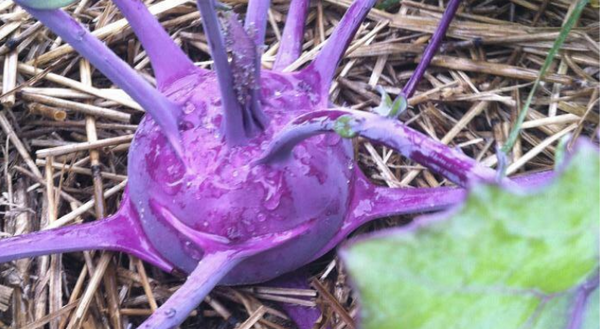
In the heat of summer’s end, vegetable gardeners are often drained by the weeding and watering routine, and ready to put the garden to bed.
But fall provides a more comfortable environment and some of the most productive gardening of the year when vegetables are planted in late summer and mature in the cool temperatures of fall. Fall vegetables require less watering, and sustain less insect and weed pressure.
At this time of year, think root crops, brassica transplants, and leafy greens. Lower temperatures trigger a release of sugars that give crops a sweeter or milder flavor. Tastier produce with less weeding and watering!
Plant carrots at the end of July into early August, ½ inch deep. Thin sprouts to ½ inch apart; thinned greens can be made into a carrot-inspired pesto or added to a salad. Three weeks after planting, spread additional soil to prevent sunburn and green tops. Harvest when carrots are about ½ to one inch in diameter. Baby carrots are ready in about 50 days; full-size carrots may take up to 80 days. Carrots can even benefit from a light frost, and can even be left in the ground until a killing frost.
Beets can also be planted through late July and early August. Soak seeds at least 24 hours before planting or pre-sprout in a moist paper towel. Beet greens can be harvested as you are waiting for the roots to develop.Taking about a third of the plant tops for an addition to your salad or morning eggs will not affect your future harvest. Thin seedlings to two inches apart. Harvest when they reach 2 inches in diameter.
Radish is the fastest fall crop, ready to harvest in about a month, and can be planted until the end of August. Plant seed half-inch deep and thin sprouts to two to four inches apart.
Brassica transplants like broccoli, cauliflower, and cabbage can be planted in late July; however, finding transplants can be difficult as garden centers typically do not have demand for fall vegetables.
Other brassicas can be started from seed, like kohlrabi, turnips, and rutabaga. Rutabaga takes the longest and seed should be sown in late July. Kohlrabi is reminiscent of broccoli stems and can be planted through mid-August. Kohlrabi and rutabaga should be thinned to five to six inches. Turnips can be planted as late as the end of August, then thinned to two inches.
Leafy greens can be grown in full to partial shade. A mixture of leftover seeds from spring make a great baby green salad, planted weekly, all the way into the beginning of September. Include kale, swiss chard, mustard, lettuce, bok choi, collards, arugula, endive, watercress, and even beets. Harvest when leaves are shorter than three inches for the best taste. Larger greens are better cooked. Greens thrive in consistently moist soil that’s high in organic matter.
Try vegetable gardening in the fall, and you just may forgo the early spring race to get seeds and plants in the ground.